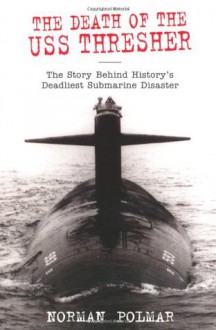The Death of the USS Thresher
by:
Norman Polmar (author)
On the morning of April 10, 1963, the world's most advanced submarine was on a test dive off the New England coast when she sent a message to a support ship a thousand feet above her on the surface:. . . EXPERIENCING MINOR PROBLEM . . . HAVE POSITIVE ANGLE . . . ATTEMPTING TO BLOW . . .Then came...
show more
On the morning of April 10, 1963, the world's most advanced submarine was on a test dive off the New England coast when she sent a message to a support ship a thousand feet above her on the surface:. . . EXPERIENCING MINOR PROBLEM . . . HAVE POSITIVE ANGLE . . . ATTEMPTING TO BLOW . . .Then came the sounds of air under pressure and a garbled message: . . . TEST DEPTH . . .Last came the eerie sounds that experienced navy men knew from World War II: the sounds of a submarine breaking up and compartments collapsing.When she first went to sea in April of 1961, the U.S. nuclear submarine Thresher was the most advanced submarine at sea, built specifically to hunt and kill Soviet submarines. In The Death of the USS Thresher, renowned naval and intelligence consultant Norman Polmar recounts the dramatic circumstances surrounding her implosion, which killed all 129 men on board, in history's first loss of a nuclear submarine.This revised edition of Polmar's 1964 classic is based on interviews with the Thresher's first command officer, other submarine officers, and the designers of the submarine. Polmar provides recently declassified information about the submarine, and relates the loss to subsequent U.S. and Soviet nuclear submarine sinkings, as well as the escape and rescue systems developed by the Navy in the aftermath of the disaster. The Death of the USS Thresher is a must-read for the legions of fans who enjoyed the late Peter Maas's New York Times best seller The Terrible Hours.
show less
Format: paperback
ISBN:
9781592283927 (1592283926)
ASIN: 1592283926
Publish date: April 1st 2004
Publisher: Lyons Press
Pages no: 208
Edition language: English

The Thresher came alive in 1963. It was to be a short life. Manufactured from the new “stronger steel—the so-called HY-80 steel which could withstand the pressure of 80,000 pounds per square inch before it would start pulling apart. With a submarine hull built for deeper operation the Navy would get...

